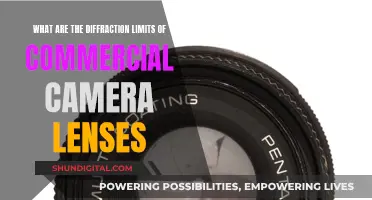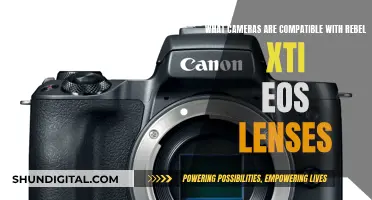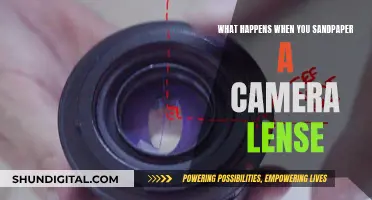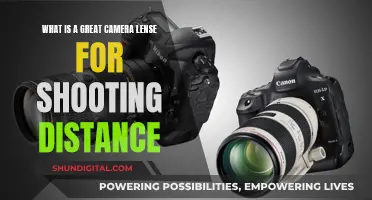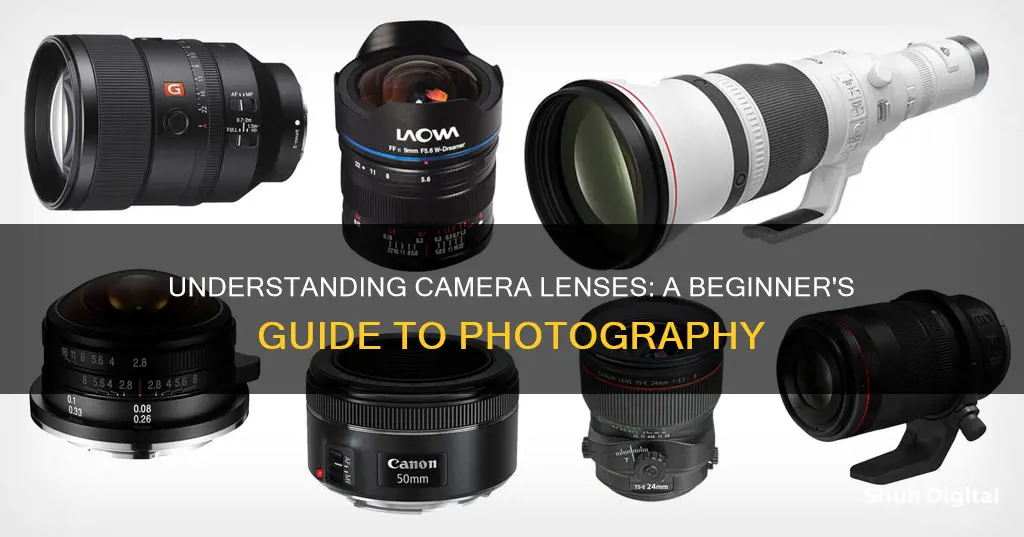
Choosing the right camera lens is crucial for achieving the perfect shot. The lens is the most important part of the camera, and a high-quality lens can help you capture great photos even with a cheap camera. When selecting a camera lens, there are several factors to consider, including the desired focal length, lens speed, compatibility with your camera, and budget.
The focal length of a lens determines how zoomed-in it is, with longer focal lengths being more zoomed-in and shorter focal lengths offering a wider angle of view. The aperture is another important factor, as it determines how much light can enter the lens and affects the depth of field. Wide-aperture lenses are better for low-light conditions and can create a bokeh effect, while narrow apertures are better for wide-angle shots.
Another decision to make is between a zoom lens and a prime lens. Zoom lenses are more versatile as they allow you to adjust the focal length, but prime lenses take sharper pictures and typically have wider apertures. It's also important to consider the compatibility of the lens with your camera's sensor and the purpose of your photography, such as portraits, landscapes, sports, or architecture.
Lastly, the cost of the lens is an important consideration, with higher-quality lenses usually being more expensive. However, investing in a good lens can be a wise decision as lenses can last longer than camera bodies and are less likely to become obsolete.
| Characteristics | Values |
|---|---|
| Focal length | 14mm, 20mm, 24mm, 28mm, 35mm, 50mm, 70mm, 100mm, 140mm, 200mm, 300mm, 600mm, 70-200mm, 17mm, 21-35mm, 35-70mm, 70-135mm, 135-300mm, 17-55mm, 18-55mm, 24-85mm, 14-24mm, 16-35mm, 24-70mm, 35mm, 70-200mm, 200-400mm, 85mm, 100mm |
| Aperture | f1.2, f1.4, f1.5, f1.8, f2, f2.8, f3.5, f4, f4.5, f5.6, f11 |
| Image stabilisation | Canon's Image Stabilization, Nikon's Vibration Reduction, Sigma's Optical Stabilization, Tamron's Vibration Compensation |
| Format | Four Thirds, APS-C, Full-frame, Cropped APS-C, Full-frame |
| Lens mount | Micro Four Thirds, L-mount, Canon EF-S, Canon EF-M, Canon RF, Nikon F, Sony E |
| Prime vs. zoom | Prime, Zoom |
| Types of prime lens | Standard, Wide-angle, Fisheye, Telephoto, Super telephoto, Ultra-wide angle |
| Types of zoom lens | Wide-angle, Telephoto |
| Sensor | CCD (Charged-Couple Device), CMOS (Complementary Metal Oxide Semiconductor) |
| Sensor size | Full-frame, Cropped sensor |
What You'll Learn

Focal length
The focal length of a lens defines how wide or zoomed-in a view the lens provides. A lower number indicates a wider shot, while a higher number means a longer zoom. For example, a lens with a focal length of 14mm, 20mm, 24mm, 28mm, or 35mm is considered a wide-angle lens. On the other hand, a telephoto lens, which allows you to get closer to your subject, typically has a focal length ranging from 50mm to 100mm.
The right focal length for you depends on your photography requirements. Landscape and architecture photography, for instance, usually require wider-angle lenses with focal lengths ranging from 14mm to 35mm. For portrait photography, the ideal focal length falls between 45mm and 85mm, as these proportions flatter the face and body. Wildlife and nature photography, on the other hand, necessitate longer focal lengths, typically in the 300mm to 600mm range, to capture tight shots without disturbing the subjects.
It is also important to note that the focal length of a lens is influenced by the camera's sensor size. The combination of focal length and sensor size determines the angle of view covered by the lens. Smaller sensors result in a narrower angle of view, while larger sensors provide a wider angle.
T3 Lenses: Universal Fit or Camera-Specific?
You may want to see also

Aperture
For example, an aperture of f/2.8 or wider is considered a wide-aperture lens, perfect for low-light photography and creating a bokeh effect. On the other hand, an aperture of f/11 or narrower is considered a narrow aperture, which is best suited for wide-angle shots.
Professional photographers often opt for lenses with wide maximum apertures, such as f/1.4, f/1.8, or f/2, as they provide the flexibility to shoot in any lighting condition. However, these lenses tend to be more expensive. Beginner photographers can usually start with lenses that have apertures of f/4 or f/5.6, which are more affordable and suitable for learning photography.
It's worth noting that the aperture value is one of the parameters used to identify lenses, along with the maximum aperture and focal length. Lenses with shorter focal lengths have maximum apertures ranging from approximately f/1.2 to f/2.8, while telephoto lenses often have maximum apertures of f/2.8 to f/5.6.
Protect Your Camera Lens: Storage Tips for Photographers
You may want to see also

Prime vs. zoom lenses
Prime and zoom lenses are two types of camera lenses that offer different features and benefits to photographers. A prime lens has a fixed focal length, meaning it cannot zoom in or out. In contrast, a zoom lens offers a variable focal length, allowing photographers to adjust the lens to get closer to or further from the subject.
Advantages of Prime Lenses
Prime lenses are often significantly cheaper than zoom lenses, making them a more affordable option for photographers on a budget. They are also generally smaller and lighter, making them more portable and easier to carry around. Prime lenses usually have larger maximum apertures, allowing for better low-light performance and the ability to create a shallow depth of field, resulting in beautiful bokeh effects. Additionally, prime lenses are known for producing sharper images, especially in the case of longer focal lengths.
Disadvantages of Prime Lenses
The main disadvantage of prime lenses is their lack of versatility. With a fixed focal length, photographers need to physically move closer or farther from the subject to adjust the framing. This can be limiting in certain situations, such as wildlife photography, where one might not be able to move closer to the subject.
Advantages of Zoom Lenses
Zoom lenses offer a wide range of focal lengths in a single lens, making them extremely versatile. They are ideal for photographers who need to adapt to different situations and capture a variety of subjects. Zoom lenses are also convenient as they eliminate the need to carry multiple prime lenses, reducing the weight of your gear.
Disadvantages of Zoom Lenses
Zoom lenses tend to be more expensive than prime lenses, especially those with a large maximum aperture. They are also typically heavier and bulkier due to the additional optical components required for zoom functionality. While modern zoom lenses have improved in terms of sharpness, they may not match the sharpness of prime lenses, especially at the extreme ends of their focal range.
The choice between a prime and a zoom lens depends on your specific needs and preferences. If you prioritise versatility and convenience, a zoom lens might be the better option. On the other hand, if you want sharper images, better low-light performance, and a shallower depth of field, a prime lens could be the right choice. Ultimately, it's important to consider your budget, the type of photography you do, and your personal shooting style when making your decision.
Why Wide-Angle Lenses Offer a Unique Perspective
You may want to see also

Compatibility with your camera's sensor
When it comes to compatibility with your camera's sensor, there are a few things to keep in mind. Firstly, digital cameras have two types of sensors: the CCD (Charged-Couple Device) and the CMOS (Complementary Metal-Oxide Semiconductor). The latter is larger and can capture more light, resulting in higher-quality images. This difference in sensor size can affect your camera's structure and function, so ensure your lens is compatible with your camera's specifications and body.
DSLR and mirrorless cameras come in two formats: crop sensor and full frame. When using a full-frame camera, the focal length listed on your lens will be accurate in your photographs. However, crop-sensor DSLR cameras have a magnification factor, typically between 1.5x and 1.6x, depending on the brand. Crop sensor mirrorless cameras, also called micro four-thirds cameras, can have a multiplication factor of up to 2x. For example, a 100mm focal length lens on a full-frame camera will reflect a true 100mm, but the same lens on a Canon crop-sensor camera will function more like a 160mm focal length lens.
Most crop-sensor camera lenses are only compatible with crop-sensor cameras, so ensure your lenses are compatible with your camera body before purchasing. Additionally, full-frame cameras should only use lenses designed for full-frame cameras.
When it comes to camera sensor size, most consumer DSLR cameras under $1,200 use a cropped or APS-C sensor, which measures approximately 22x15mm. In contrast, higher-end professional DSLR cameras use a full-frame sensor, the same size as 35mm film, measuring 36x24mm.
Understanding the Reach of 800mm Camera Lenses
You may want to see also

Budget
When it comes to budgeting for a camera lens, there are a few things to keep in mind. Firstly, consider how much you're willing to pay for a lens. This will narrow down your options to certain brands and models. While many photographers feel the need to invest in name-brand lenses, you can often find similar third-party lenses at a lower cost. For example, brands like Rokinon, Sigma, and Tamron offer more affordable alternatives to Nikon, Sony, and Canon lenses.
Another way to save money is to buy a lens without additional features like image stabilization or autofocus motors. Manual lenses usually require more practice to use effectively but often come at a lower price point. Additionally, some brands offer multiple versions of lenses at various price points, so you may be able to find a more basic version of a particular lens at a lower cost.
It's important to remember that different types of lenses will have different price points, so be sure to consider your specific needs and priorities when making your decision. You may also want to consider renting lenses to try them out before committing to a purchase, which can help you make a more informed decision.
Reviving Old SLR Cameras and Lenses: Creative Ideas
You may want to see also
Frequently asked questions
The three most important factors to consider are focal length, aperture, and whether to go for a zoom or prime lens. The focal length is how zoomed-in the lens is, with longer focal lengths being better for faraway subjects and shorter focal lengths for close-up shots. The aperture is how wide the lens opens, with wider apertures (e.g. f/2.8) being better for low light and narrower apertures (e.g. f/11) for wide-angle shots. Zoom lenses are more versatile as you can adjust the focal length, while prime lenses take sharper pictures and have wider apertures.
First, think about what you usually like to photograph. If you enjoy taking landscape and travel photos, a lens with a wide view might be best, whereas if you're going on safari or photographing sports, a lens that lets you zoom in is a better option. You should also know what type of lens you need, what aperture you want, and what options are compatible with your camera.
Prime lenses have a fixed focal length and cannot zoom in or out, whereas zoom lenses have a variable focal length that can be adjusted. Prime lenses tend to be smaller and lighter, and they produce sharper, higher-quality images than zoom lenses. Zoom lenses are more versatile and can accommodate different types of photographic subjects, but they tend to have narrower maximum apertures the more you zoom in.




